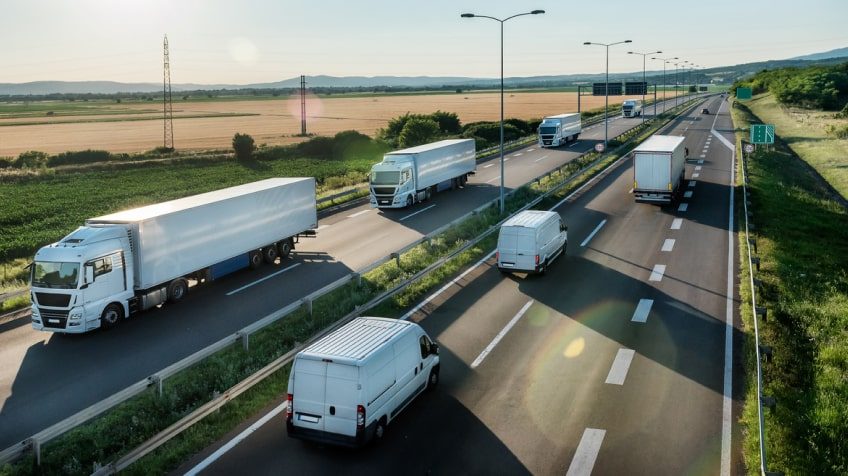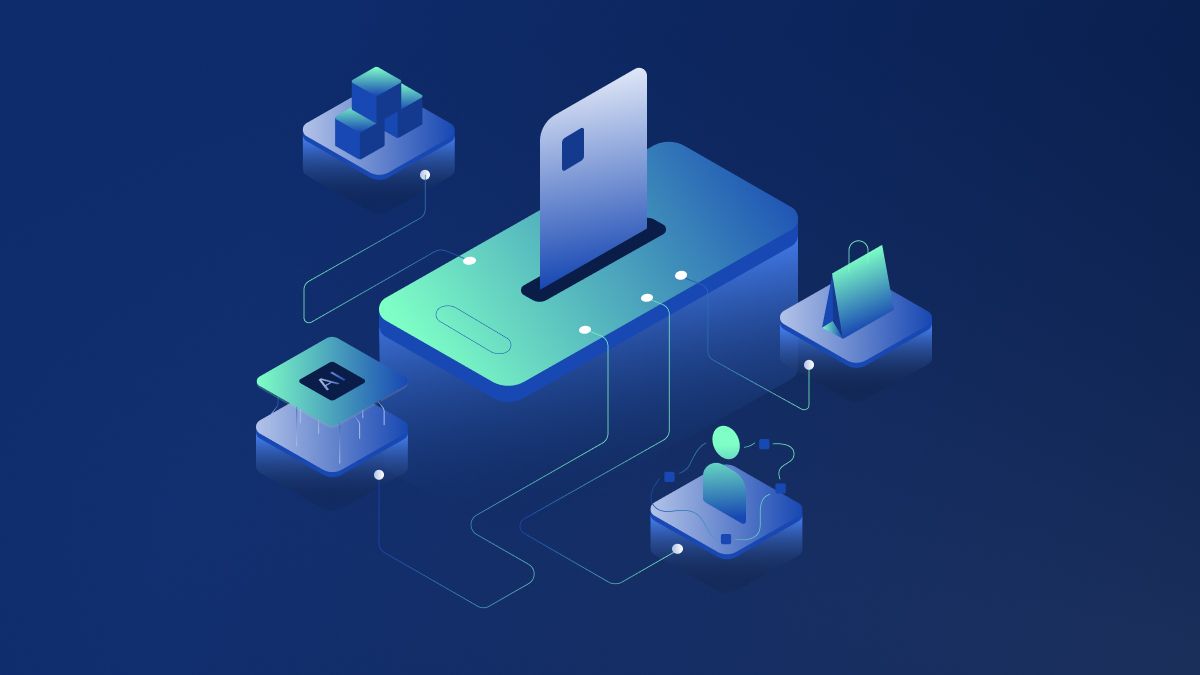After a challenging 2020, the transportation and logistics software industry is poised to face unique circumstances as the future collides with the present. For any organization looking to take the next step in transportation, these are the red-letter areas that need attention.
The safety of transported goods
Due to the pandemic, ensuring the safety of transported goods has never been more important. Moving vaccines from factory to patient and ensuring there are no problems on the road is a matter of life and death. This is true for the immediate health of those receiving vaccines and the wider societal and economic health of a world in crisis.
Companies worldwide must pay closer attention to efficiency and safety and inspire confidence in consumers and contractors.
But there is more to transporting goods than making sure they reach their destination. There is an environmental aspect that the wider public often ignores.
According to a Packaging Europe article in 2018, nearly half of the total environmental cost of shipping is caused by damage alone. Companies all around the world are constantly looking into transportation solutions that will lessen that damage, with alternative forms of packaging getting most of the attention. It might seem obvious to emphasize the importance of transporting goods safely, but it is an area that will garner more attention in the coming years.
COVID-19 and border restrictions
The shutting of borders and international trade routes due to COVID-19 has had a serious impact on the transportation industry.
Expect the issue of border restrictions to continue to dominate the transportation conversation throughout 2021. Complex statuses will increase the need for innovation in logistics and transportation software, as companies strive to keep corridors open and business moving.
One Statista estimate predicted a 6.1% decrease in the gross value of the logistics industry, a number that varies from market to market. COVID-19 has presented the world with a new set of challenges, and the transportation and logistics industry will need to dig deep to stay afloat.
Cloud-based systems and digital adoption
Why is it so important that transportation takes digitalization seriously? The one-size-fits-all nature of the cloud speaks for itself, but any company worth its salt knows the benefits of improved transportation and logistics software.
To begin with, the cloud has made purchasing costly hardware to manage vehicles largely obsolete, allowing a single system to trace vehicle efficiency and progress. This means companies can spend less budget on on-premises hardware.
Planning transportation is one thing, but planning logistics is another. Luckily for those in the transportation industry, cloud-based software offers painless solutions. Moving to a digital model helps organizations better manage time and transport, streamline costs, evaluate quality more efficiently, reduce costs, and improve communication.
Self-driving vehicles
While autonomous vehicles will not make truckers, helmsmen, and drivers obsolete just yet, self-driving cars are a real thing and evolving rapidly.
But there is a lot more to shepherding transportation than simply manning the vehicle. Truckers don’t simply drive trucks; helmsmen don’t simply control ferries. They have many tasks that go along with driving, from securing cargo to dealing with the logistical and bureaucratic entanglements at borders, not to mention off-hand customer service issues.
Still, automation remains a pertinent discussion. Some companies, such as Scania and Volvo, are experimenting with autonomous vehicles. A Scania self-driving truck completed a journey from Sweden to the Netherlands without a hitch.
It’s understandable why transportation companies are eager to embrace automation. Self-driving vehicles essentially eliminate off-hours, streamline services, and increase productivity. Machines don’t require breaks, after all. There is also an environmental angle, as automated vehicles improve sustainability.
Ultimately, the natural shrinking of the market—along with innovative technology—will push self-driving trucks into the mainstream. As recently as 2018, more than 150,000 trucking jobs went unfulfilled across Europe, highlighting a shortage of workers in an industry that has long relied on them. Transportation romantics might dismiss self-driving trucks, but the advent of autonomous transportation is closer than you think.
Regulatory Compliance
Self-driving trucks might represent the future of the transportation industry, but they need to stay within the rules. While trends in transportation and logistics vary from company to company, regulation compliance is constant and obligatory.
Innovative developments in transportation and logistics software have made this easier, as programs can quickly evaluate whether a particular company is up to date with compliance.
But that isn’t to say that companies should rest easy on compliance. Failing to comply with new regulations can be terminal, be it employee-related regulations or even the basic health and safety tenets of the industry. Staying compliant will always be a trend, no matter what the industry.
Mobility-as-a-Service (MaaS)
Mobility-as-a-Service (MaaS) is essentially a joint digital channel that integrates various transport services into one easily accessible point, streamlining supply and demand in the process.
Today’s consumers, who demand smoother travel and consolidated, accessible services, drive the need for MaaS.
MaaS ticks boxes on both ends of the system. From the supply side, a diverse menu of transportation options is easily available to the customer. For those looking for transport, MaaS combines everything into one simple channel, removing the hassle of switching between tickets, schedules, and payment.
More AI in transportation and smart mobility
Much like automated vehicles, artificial intelligence (AI) is no longer the stuff of science fiction. The two go hand in hand, as developments in AI have made self-driving trucks possible through improved motion sensors and automated evaluation capabilities, allowing machines to mimic human behavior in even the most unorthodox situations. If automated vehicles are the future of transportation, it’s because AI allows them to be.
AI’s reach in transportation goes beyond automated cars. It is vital in collecting and processing data on traffic congestion, flow, and scheduling and in the efficient transport of goods across oceans, tracks, and roads. AI can help design an optimal transit network for any community, picking out areas of weakness in an instant.
The growth of the transportation industry, from the steamboat in 1787 to the self-driving truck of the 21st century, has always depended on technological innovation, at which AI now sits front and center. Put simply, AI increases safety, lessens logjams, streamlines productivity, and reduces costs.
Open platforms and data to drive mobility services
Many expected the growth of open platforms to be one of the major transportation trends of 2021 and beyond. But the chaos and confusion caused by COVID-19 lightened the impact of open platforms.
The success (or lack thereof) of MaaS depends on the development of open platforms. These platforms are more adaptable and flexible than proprietary software and, therefore, a better fit for data analytics. Without open platforms, prospective customers will have difficulty accessing the information they need.
Many of the trends described in this article depend on data availability and transparency. The move towards open platforms and data to drive technology-enabled mobility services in transportation will gather steam in the coming year.
Sustainability and environmental regulation
Finally, 2021-2022 will see a continued desire for “green” modes of transportation. The industry often bears the brunt of activist ire over emissions from planes, trains, and automobiles. For the transportation industry, it’s vital to remain one step ahead of environmental regulations.
With that in mind, companies must aim to develop sustainable and environmentally friendly ways of working. The days of guzzling fuel in the name of commerce are gone, thankfully. On a micro level, every instance of carpooling, ridesharing, or decision to walk helps the environment, while large companies continue to try and improve sustainability for larger cargo.
Automation is a step in the right direction, but more steps are required. As more and more countries around the world embrace environmentally friendly regulations, automation and transportation and logistics software will become more of an industry priority in 2022 and beyond.
Want to learn more about how HTEC’s technology expertise can transform your business? Explore our Technical Strategy and Logistics & Transportation capabilities.





